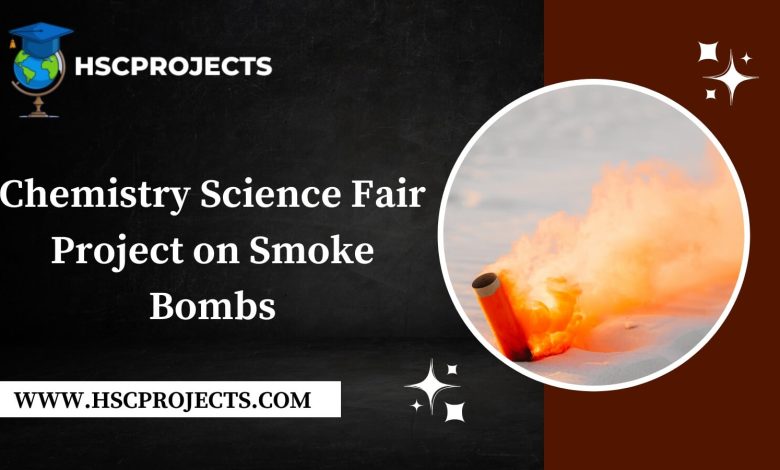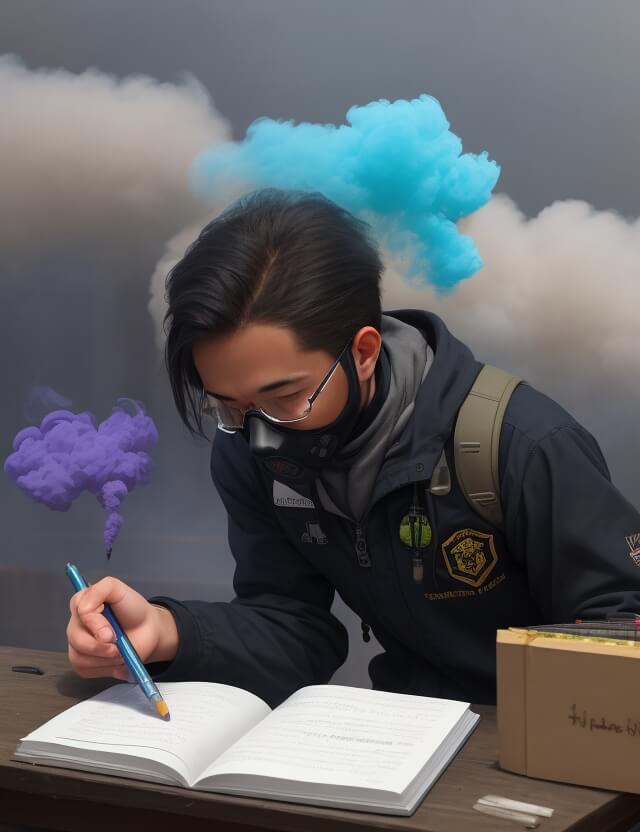
Chemistry Science Fair Project on Smoke Bombs
Introduction
Unlock the secrets of chemical reactions with this exciting science fair project focused on the chemistry of smoke bombs. Discover how simple household items can be transformed into a smoke-producing spectacle.
Aim
The project aims to demonstrate the chemical process involved in creating a smoke bomb, understanding the role of each component, and exploring the practical uses of smoke bombs in various fields.
Theoretical Background
- Basic Principles: Smoke bombs are based on a chemical reaction where an oxidizer and a fuel are combined to produce smoke.
- Historical Context: The concept of smoke bombs dates back to 1848, evolving from simple Chinese fireworks to more sophisticated compositions.
Materials Required
- Sugar
- Potassium Nitrate (Saltpeter)
- Cooking Pan
- Aluminum Foil or Paper Tube
- Fuses
- Cotton
- Safety Equipment (Gloves, Goggles)
Procedure
- Preparing the Mixture: Mix potassium nitrate and sugar in a 3:2 ratio in a skillet, applying low heat and stirring until it reaches a peanut-butter-like consistency.
- Molding the Bomb: Pour the mixture onto foil or a paper tube, inserting a fuse before the mixture cools and hardens.
- Safety Precautions: Ensure the work area is well-ventilated and all safety equipment is worn.
Chemistry Behind the Smoke Bomb
- Reaction Dynamics: The heat decomposes sugar, releasing energy, while potassium nitrate acts as an oxidizer, enhancing combustion.
- Color and Smoke: Colored dyes can be added to the mixture to produce different colored smokes.

Experiment Analysis
- Observations: Note the duration, intensity, and color of the smoke produced.
- Variations: Experiment with different ratios and types of sugar to observe changes in the smoke bomb’s performance.
Practical Applications
- Military Use: Smoke bombs provide cover in combat situations.
- Civil Use: Used in firefighting training and emergency drills.
Safety and Environmental Concerns
- Emphasize the importance of conducting the experiment in a safe, controlled environment.
- Discuss the environmental impact and the importance of proper disposal.
Conclusion
This project provides a hands-on experience of the fascinating world of chemical reactions, demonstrating the principles of combustion and oxidation. It also offers insights into the practical applications of chemistry in everyday life.
Bibliography
- Chemistry textbooks and online resources.
- Historical documents on the evolution of smoke bombs.
In order to download the PDF, You must follow on Youtube. Once done, Click on Submit
Follow On YoutubeSubscribed? Click on Confirm
Download Chemistry Science Fair Project on Smoke Bombs PDF






